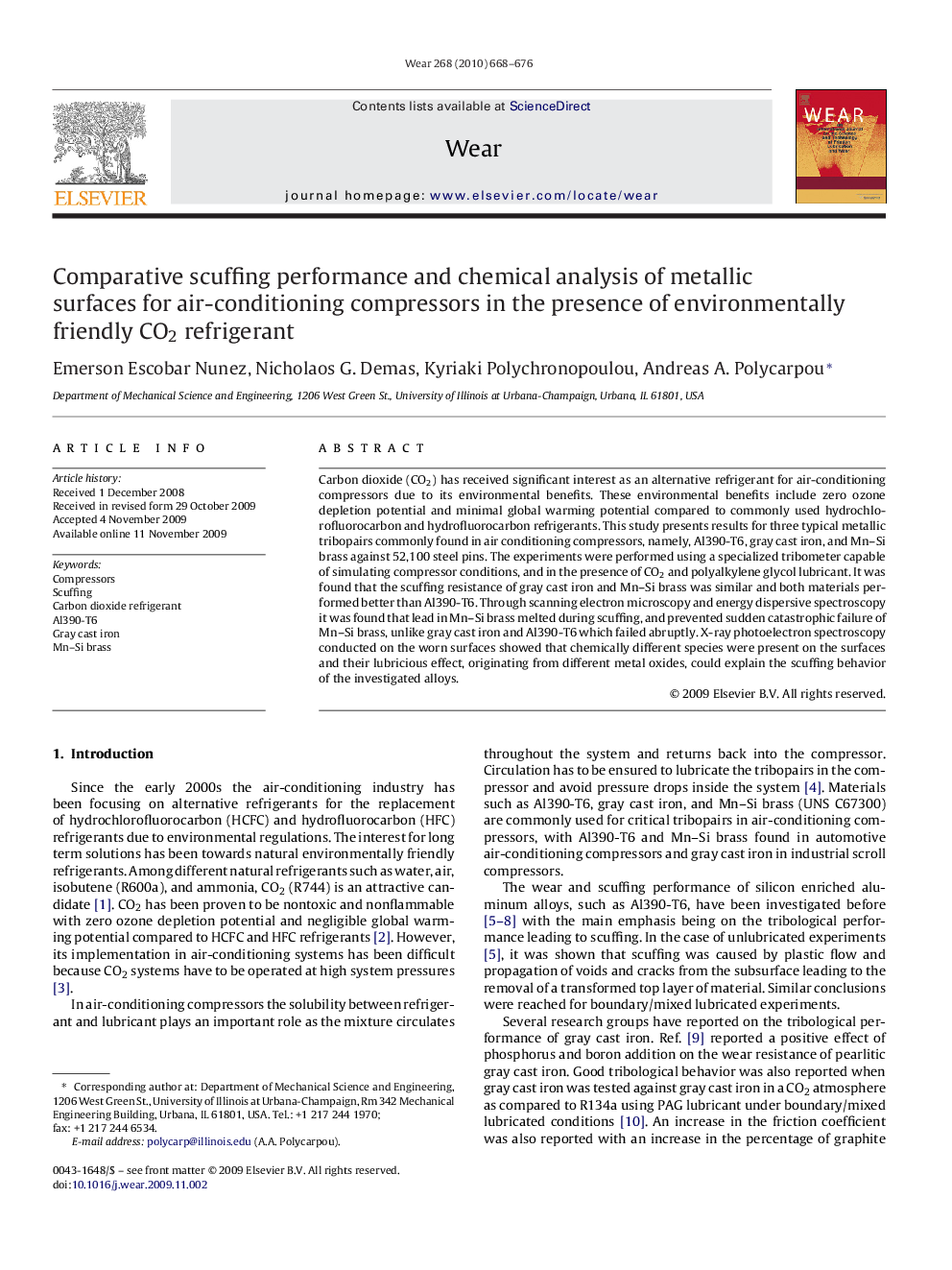| Article ID | Journal | Published Year | Pages | File Type |
|---|---|---|---|---|
| 618430 | Wear | 2010 | 9 Pages |
Carbon dioxide (CO2) has received significant interest as an alternative refrigerant for air-conditioning compressors due to its environmental benefits. These environmental benefits include zero ozone depletion potential and minimal global warming potential compared to commonly used hydrochlorofluorocarbon and hydrofluorocarbon refrigerants. This study presents results for three typical metallic tribopairs commonly found in air conditioning compressors, namely, Al390-T6, gray cast iron, and Mn–Si brass against 52,100 steel pins. The experiments were performed using a specialized tribometer capable of simulating compressor conditions, and in the presence of CO2 and polyalkylene glycol lubricant. It was found that the scuffing resistance of gray cast iron and Mn–Si brass was similar and both materials performed better than Al390-T6. Through scanning electron microscopy and energy dispersive spectroscopy it was found that lead in Mn–Si brass melted during scuffing, and prevented sudden catastrophic failure of Mn–Si brass, unlike gray cast iron and Al390-T6 which failed abruptly. X-ray photoelectron spectroscopy conducted on the worn surfaces showed that chemically different species were present on the surfaces and their lubricious effect, originating from different metal oxides, could explain the scuffing behavior of the investigated alloys.
